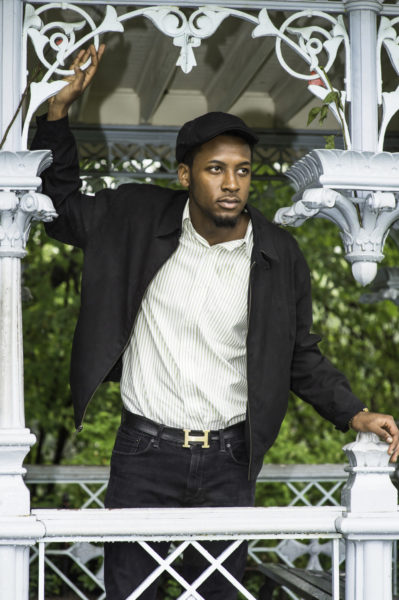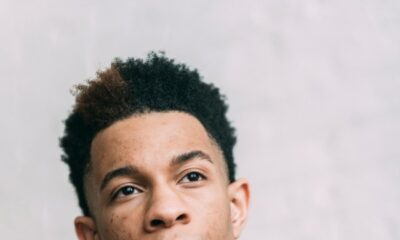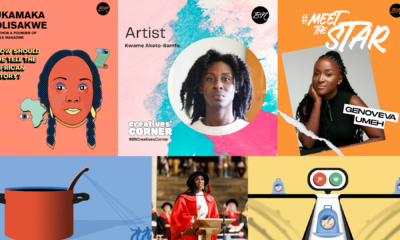Features
Akanna Okeke: The Struggle Makes the Butterfly
 I sat and listened to this woman tell the story. It was the story of the ‘Cocoon and the Butterfly’. A beautiful story it was and, to my understanding, a fairly popular one.
I sat and listened to this woman tell the story. It was the story of the ‘Cocoon and the Butterfly’. A beautiful story it was and, to my understanding, a fairly popular one.
I knew it was meant for children, but it touched my on a very deep level. It made me think about how hard it is to find well-adjusted adults on earth; part of the reason being that struggle is taken away from us as society advances from age to age.
The interesting fact is that those who went through some struggle to become who they are today seem to want to take away the struggle from those coming after them, like something else is supposed to make them turn out even better.
Animals get this; they go through the same process of raising their young and throwing them into the wild to ‘find their footing’. Butterflies are not exempt. They may not be flung into the wild. But to become butterflies, they have to go through some struggle –alone! No external help. Without that process, they do not get to become butterflies.
Here goes the story:
“A little boy was once playing outdoors and found a fascinating caterpillar. He picked it up and took it home to show his mother. He asked his mother if he could keep it, and she said he could if he would take good care of it.
The little boy got a large jar from his mother and put plants to eat, and a stick to climb on, in the jar. Every day he watched the caterpillar and brought it new plants to eat.
One day the caterpillar climbed up the stick and started acting strangely. The boy worriedly called his mother who came and understood that the caterpillar was creating a cocoon. The mother explained to the boy how the caterpillar was going to go through a metamorphosis and become a butterfly.
The little boy was thrilled to hear about the changes his caterpillar would go through. He watched every day, waiting for the butterfly to emerge. One day it happened, a small hole appeared in the cocoon and the butterfly started to struggle to come out.
At first the boy was excited, but soon he became concerned. The butterfly was struggling so hard to get out! It looked like it couldn’t break free! It looked desperate! It looked like it was making no progress!
The boy was so concerned he decided to help. He ran to get scissors. He snipped the cocoon to make the hole bigger and the butterfly quickly emerged!
As the butterfly came out the boy was surprised. It had a swollen body and small, shriveled wings. He continued to watch the butterfly expecting that, at any moment, the wings would dry out, enlarge and expand to support the swollen body. He knew that in time the body would shrink and the butterfly’s wings would expand.
But neither happened!
The butterfly spent the rest of its life crawling around with a swollen body and shriveled wings.
It never was able to fly…
As the boy tried to figure out what had gone wrong his mother took him to talk to a scientist from a local college. He learned that the butterfly was SUPPOSED to struggle. In fact, the butterfly’s struggle to push its way through the tiny opening of the cocoon pushes the fluid out of its body and into its wings. Without the struggle, the butterfly would never, ever fly. The boy’s good intentions harmed the butterfly.”
As simple and as entertaining as the story was, it led me into deep contemplation. I contemplated technological advancement, I contemplated trust funds, I contemplated parenting, I contemplated arranged marriages, I contemplated being saved by grace, and I contemplated freedom.
Where do we draw the line? When do we refuse help from good intentions that tend to harm us? What are those things that make life so easy, yet clip our wings?
Contributions will always be made in our world, and they are mostly in the form of things that remove struggles from everyday life. We have no control over these contributions; it’s just how the world works. But we have control over which ones we use and how we use them.
Other people are supposed to help us with our burdens only, while they leave us to deal with our responsibilities. The problem is that not everyone knows the difference between these two. We can educate them, but we cannot control their response. It ultimately is upon us to identify our responsibilities and our burdens. And then keep others from helping us with the former, because those are the struggles that make us into butterflies. Otherwise, we become adult-babies, crawling about in total dependency, with the inability to stand on our own, to fly.
But the question now is: what exactly are those struggles that make us butterflies?
Photo Credit: Xiao Cai | Dreamstime.com






















